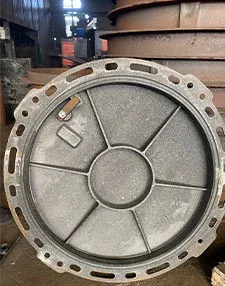gate valve washer
Understanding Gate Valve Washers A Key Component for Valve Functionality
Gate valves are essential components in various piping systems, providing a reliable means to control fluid flow. Among the numerous parts that contribute to the effective operation of a gate valve, the washer plays a crucial role. This article delves into the significance of gate valve washers, their types, materials, maintenance, and best practices for ensuring optimal performance.
What is a Gate Valve Washer?
A gate valve washer is a sealing component situated typically between the valve body and the gate mechanism. It acts as a barrier to prevent leaks, ensuring the fluid flows smoothly when the valve is in the open position and remains contained when closed. The efficacy of a gate valve largely depends on the quality and condition of its washer, making it vital for the overall performance and longevity of the valve system.
Types of Gate Valve Washers
Gate valve washers come in various types, each designed to fulfill specific requirements based on the application and fluid being controlled. Some common types include
1. Flat Washers These are the most basic form, providing a simple sealing solution suitable for low-pressure applications.
2. O-Ring Washers Featuring a circular cross-section, these washers provide a more reliable seal, especially in high-pressure environments. Their elasticity allows them to adapt to the mating surfaces, ensuring a tight seal even under pressure fluctuations.
3. Spring Washers Used in applications with varying pressure, these provide additional tension, helping to maintain the seal as the valve operates.
4. Composite Washers Composed of various materials, these washers are engineered for specific applications, offering enhanced resistance to chemicals, temperatures, and pressure.
Materials Used in Gate Valve Washers
The material selection for gate valve washers is critical. Common materials include
- Rubber Ideal for low to medium pressure, rubber washers offer excellent flexibility and sealing capabilities
.- PTFE (Polytetrafluoroethylene) Known for its chemical resistance and high-temperature tolerance, PTFE washers are suitable for aggressive fluids.
gate valve washer

- Metal Stainless steel or brass washers are used in high-temperature and high-pressure applications where durability is paramount.
- Elastomers These materials provide good resistance against aging and environmental conditions, making them popular for various applications.
Importance of Maintenance
Proper maintenance of gate valve washers is essential to prolonging the life of the valve and ensuring it operates efficiently. Over time, washers can wear out due to pressure, temperature fluctuations, or chemical exposure. Regular inspections can help identify signs of wear, such as cracks, deformation, or brittleness.
Replacing washers at the first sign of deterioration can prevent leaks that could lead to more significant issues, including fluid loss, environmental hazards, and increased operational costs.
Best Practices for Installation and Replacement
When installing or replacing gate valve washers, certain best practices should be followed
1. Ensure Compatibility Always choose washers that are compatible with the valve type and the fluid being handled. Consult the manufacturer’s specifications for guidance.
2. Clean the Valve Body Before installation, clean the valve body to remove any debris or old sealant that could interfere with the washer’s performance.
3. Use Proper Torque Adhere to recommended torque specifications to prevent over-tightening, which can compress the washer excessively and lead to premature failure.
4. Periodic Inspections Implement a routine inspection schedule to check for leaks, cracks, or other signs of wear.
5. Seek Professional Assistance When in doubt about maintenance or replacement, consult a professional to ensure the gate valve system continues to function optimally.
Conclusion
Gate valve washers are integral components that contribute significantly to the effectiveness and reliability of gate valves. Through understanding the different types, materials, and maintenance practices, industries can ensure their valve systems operate efficiently and without interruption. Regular maintenance and timely replacements can save time and resources while enhancing the overall performance of fluid control systems.
-
The Smarter Choice for Pedestrian AreasNewsJun.30,2025
-
The Gold Standard in Round Drain CoversNewsJun.30,2025
-
The Gold Standard in Manhole Cover SystemsNewsJun.30,2025
-
Superior Drainage Solutions with Premium Gully GratesNewsJun.30,2025
-
Superior Drainage Solutions for Global InfrastructureNewsJun.30,2025
-
Square Manhole Solutions for Modern InfrastructureNewsJun.30,2025
-
Premium Manhole Covers for Modern InfrastructureNewsJun.30,2025
